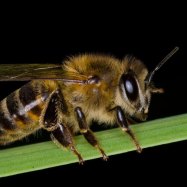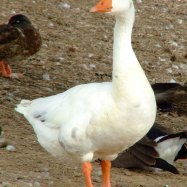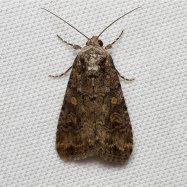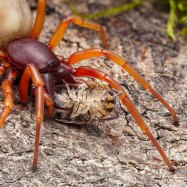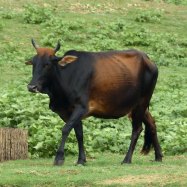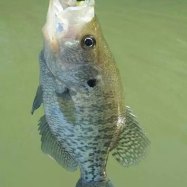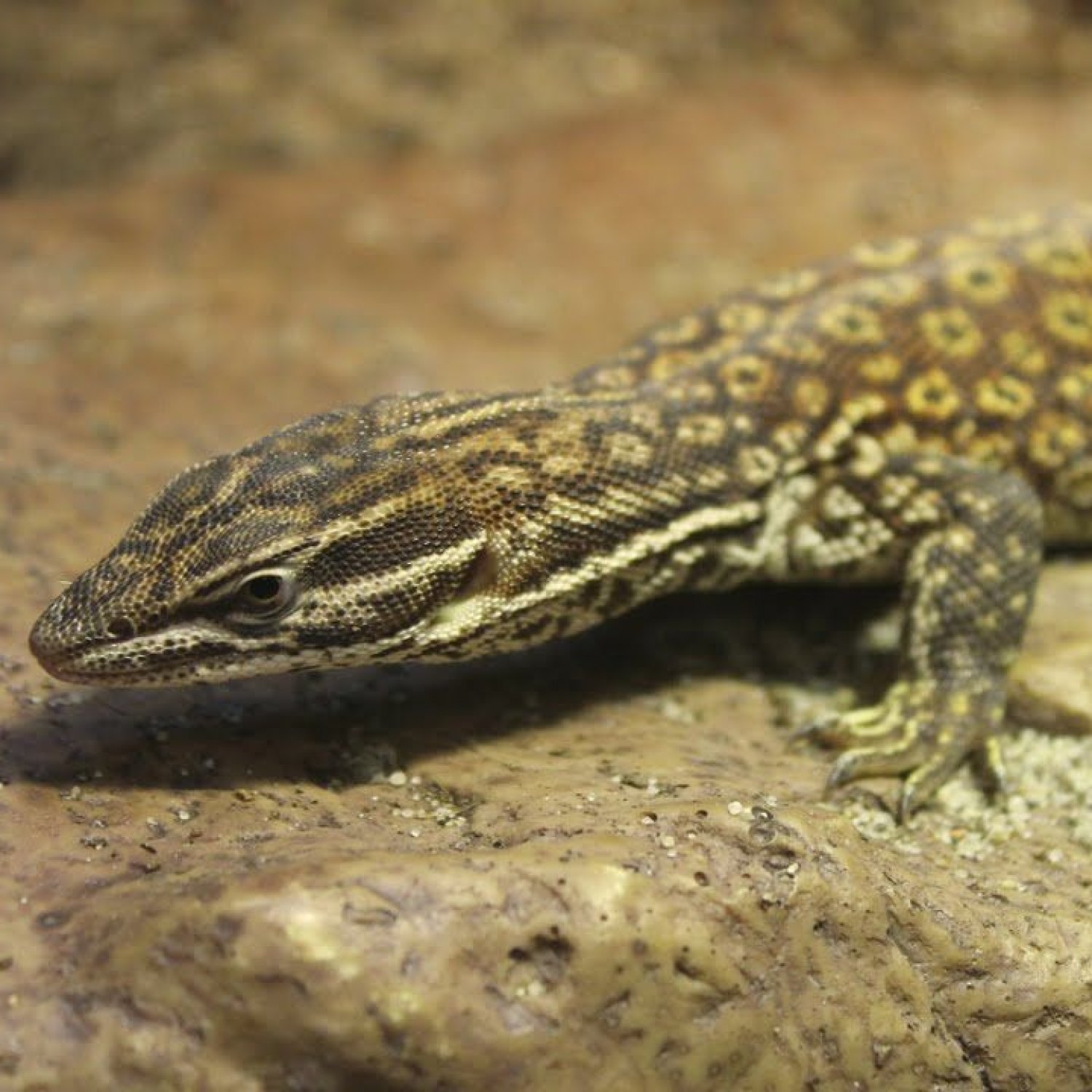
Red Ackie Monitor
Up to 2 feet
The Red Ackie Monitor, also known as the Spiny-tailed Monitor, is a popular reptile among exotic pet owners. Native to Northern Australia, these fascinating creatures can reach a length of up to 2 feet. With a cylindrical and elongated body shape, they belong to the Varanidae family of lizards. These intelligent and active animals require specialized care and can make great additions to a reptile lover's collection.
Animal Details Summary:
Common Name: Red Ackie Monitor
Kingdom: Animalia
Habitat: Savannahs, grasslands, and rocky areas
The Fascinating Creature: Red Ackie Monitor
The vast land of Australia is full of unique species, from the stunning koala to the dangerous redback spider. One of the lesser-known but equally fascinating creatures that reside in the rugged terrain of Australia is the Red Ackie Monitor. This small, colorful lizard is gaining popularity among reptile enthusiasts due to its striking appearance and captivating behavior. Let's dive into the world of Red Ackie Monitors and learn more about these fascinating creatures Red Ackie Monitor.Meet the Red Ackie Monitor
The scientific name of this species is Varanus acanthurus, and it belongs to the Kingdom Animalia and Phylum Chordata. Its common name, Red Ackie Monitor, refers to its distinct coloration and its resemblance to the larger monitor lizard.The Physical Characteristics of Red Ackie Monitors
Red Ackie Monitors can be easily distinguished by their bright and vibrant coloration. Their bodies display shades of red, yellow, and black, making them a sight to behold. The top of their heads is patterned with black markings, extending down to their long, cylindrical bodies. They have a unique banded pattern on their tails, with brighter colors on their lower half.These lizards are relatively small, growing up to 2 feet in length, with males being slightly larger than females. Their body shape is cylindrical and elongated, with short, powerful legs that allow them to move swiftly on rocky terrain.
Habitat and Geographical Distribution
Red Ackie Monitors are native to the northern regions of Australia and southern New Guinea Rock Bass. They can be found in various habitats, including savannahs, grasslands, and rocky areas. These lizards are excellent climbers and can often be spotted perched on top of rocks or tree branches, soaking up the sun.Diet and Feeding Behavior
As carnivorous creatures, Red Ackie Monitors have a diverse diet, and their feeding behavior is quite fascinating to observe. In the wild, they primarily feed on insects, snails, small mammals, and other reptiles, including other lizards. They have sharp teeth and a powerful bite, making it easier for them to catch and consume their prey.In captivity, these lizards can be fed a mixture of crickets, mealworms, and cockroaches, along with an occasional treat of small rodents. It's essential to vary their diet and provide them with a balanced and nutritious meal to keep them healthy.
The Unique Behaviors of Red Ackie Monitors
One of the most remarkable features of Red Ackie Monitors is their curious and active nature. They are known to be quite interactive with their owners and can be quite entertaining to watch. These lizards are diurnal, meaning they are active during the day, especially during the early mornings and late afternoons.In the wild, they are solitary creatures and only come together during the breeding season. However, in captivity, they can be kept in pairs or small groups, as long as there is adequate space for each individual to establish its territory.
The Importance of Proper Care and Handling
It's essential to note that, like any other pet, Red Ackie Monitors require proper care and handling to thrive in captivity. Their enclosure must provide adequate space, proper temperature, and humidity levels, along with a substrate suitable for digging and burrowing.Since these lizards have a high metabolism, they need to be fed frequently, preferably on a daily basis. It's essential to offer them a varied diet and to ensure their food is dusted with calcium and other essential nutrients to keep them healthy.
When it comes to handling, it's crucial to approach these lizards with caution, especially if they are not used to being handled. It may take some time for them to get comfortable with their owners, so it's best to start by observing them and gradually building trust.
Conservation Status and Threats
Red Ackie Monitors are listed as a species of least concern by the International Union for Conservation of Nature (IUCN). However, their population is rapidly declining in the wild due to habitat destruction and hunting for the exotic pet trade.It's important to ensure that these lizards are obtained from reputable breeders and not taken from their natural habitat. Responsible ownership and breeding can contribute to conserving this beautiful species for future generations to admire and enjoy.
The Unique Language of Red Ackie Monitors
As omnivorous animals, these lizards have a unique way of communicating with each other. They use different body postures, head bobbing, and tail movements to express their emotions and assert dominance.For instance, when they are feeling threatened or afraid, Red Ackie Monitors will raise and flatten their bodies, curl their tails, and stare intensely at the potential threat. On the other hand, if they are feeling comfortable and content, they will relax their bodies, sit upright, and bask in the sun.
Technology and Red Ackie Monitors
Technology has played a crucial role in helping us understand the behavior and biology of these fascinating creatures. New advancements in DNA sequencing and bioinformatics have helped researchers determine the genetic diversity of Red Ackie Monitors and their ecological relationships with other species.Moreover, conservationists have used satellite imaging and GPS technology to track and map the distribution of Red Ackie Monitors in their natural habitat. This information has helped in creating effective conservation plans and management strategies to protect these lizards and their fragile ecosystem.
The Role of Red Ackie Monitors in the Ecosystem
Aside from being fascinating creatures, Red Ackie Monitors play a crucial role in the ecosystem. As predators, they help in controlling the population of insects and other small vertebrates, maintaining a balance in the food chain. They also serve as prey for larger predators, helping to sustain the biodiversity of their habitats.In Conclusion
The Red Ackie Monitor is a captivating species that has gained popularity in the exotic pet trade. These lizards are unique in appearance and behavior, making them a favorite among reptile enthusiasts. However, it's crucial to remember that they require proper care, and obtaining them responsibly is crucial in ensuring their conservation in the wild.As technology continues to advance, we may uncover more secrets about these fascinating creatures, but for now, we can appreciate them from a respectful distance and continue to learn from their remarkable behavior and contribution to the ecosystem.

Red Ackie Monitor
Animal Details Red Ackie Monitor - Scientific Name: Varanus acanthurus
- Category: Animals R
- Scientific Name: Varanus acanthurus
- Common Name: Red Ackie Monitor
- Kingdom: Animalia
- Phylum: Chordata
- Class: Reptilia
- Order: Squamata
- Family: Varanidae
- Habitat: Savannahs, grasslands, and rocky areas
- Feeding Method: Carnivorous
- Geographical Distribution: Northern Australia and southern New Guinea
- Country of Origin: Australia
- Location: Northern Australia
- Animal Coloration: Red, yellow, and black
- Body Shape: Cylindrical and elongated
- Length: Up to 2 feet
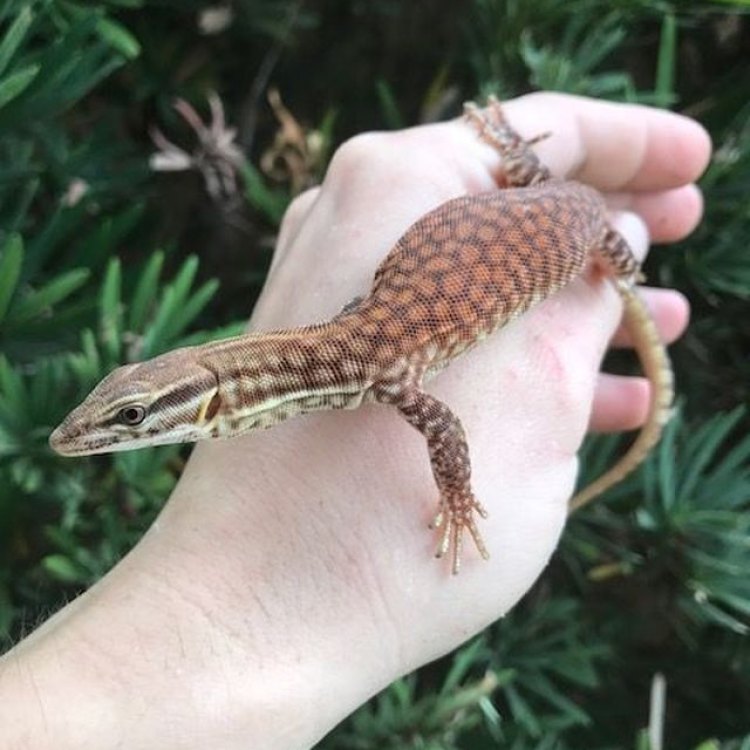
Red Ackie Monitor
- Adult Size: Small to medium
- Average Lifespan: 10 to 15 years
- Reproduction: Oviparous
- Reproductive Behavior: Males will court females by head bobbing and tail flicking
- Sound or Call: Primarily silent
- Migration Pattern: Non-migratory
- Social Groups: Solitary or live in small groups
- Behavior: Diurnal and burrow dwellers
- Threats: Habitat loss and illegal pet trade
- Conservation Status: Least Concern
- Impact on Ecosystem: Apex predator
- Human Use: Kept as exotic pets
- Distinctive Features: Spiny scales and long, forked tongue
- Interesting Facts: They can run on their hind legs when threatened
- Predator: Large birds, snakes, and mammals

Varanus acanthurus
The Fierce Yet Misunderstood Red Ackie Monitor: A Fascinating Creature You Have to Know About
In the vast world of reptiles, there is one species that stands out with its unique appearance, distinctive features, and fascinating behaviors - the Red Ackie Monitor. This small to medium-sized lizard may not be as famous as its larger relatives like Komodo dragons, but it is undoubtedly a one-of-a-kind creature that captivates the hearts of reptile enthusiasts.Found in the arid regions of Australia, the Red Ackie Monitor, also known as the "Ridge-tailed Monitor" or "Spiny-tailed Monitor," is a species of monitor lizard (Varanus acanthurus) belonging to the family Varanidae. These fascinating creatures have become popular among exotic pet owners due to their manageable size, curious personality, and captivating appearance PeaceOfAnimals.Com. However, despite their charm, little is known about their natural behavior and role in the ecosystem. So, let's dive into the world of Red Ackie Monitors and discover the fascinating facts that make them stand out among other reptiles.
Small Yet Mighty: Size and Lifespan
The Red Ackie Monitor is a relatively small species of monitor lizard, and it reaches an average adult size of 18 to 24 inches. Compared to their larger relatives like the Komodo dragon, which can grow up to 10 feet in length, the Red Ackie is a dwarf in the world of monitors. However, what they lack in size, they make up for in their unique physical features and personality.
These lizards have a distinctive reddish-brown coloration with black spots, making them highly recognizable in their natural habitat. They are also known for their spiny scales, giving them a rough and armored appearance. The spines, along with their sharp claws, serve as their primary defense mechanism against predators.
In the wild, the Red Ackie Monitors have a lifespan of 10 to 15 years Ring Billed Gull. However, under proper care in captivity, some have been known to reach up to 20 years. These lizards may live a shorter time compared to other reptiles, but they make the most out of their life by thriving in their natural habitat.
Oviparous Reproduction and Unique Reproductive Behavior
Unlike some reptiles that give birth to live young, the Red Ackie Monitor is an oviparous species, meaning they lay eggs. In the wild, these lizards will mate during the late spring and create a nest for the female to lay her eggs. The female Ackie Monitor will lay clutches of 5 to 15 eggs, which will hatch after an incubation period of 8 to 10 weeks.
The most intriguing aspect of their reproductive behavior is the way males court females. Unlike humans, where flowers or chocolates may do the trick, Ackie Monitor males use head bobbing and tail flicking to impress the females. Mating season is the only time these generally solitary creatures will interact with each other, making the courtship rituals a fascinating sight to behold.
The Silent Invader: Sounds and Migration Patterns
When it comes to vocalization, the Red Ackie Monitor is primarily a silent species. They do not produce any sounds or calls, making them stealthy predators in their natural habitat. These lizards are diurnal, meaning they are active during the day and spend the night in their burrows.
Speaking of burrows, the Red Ackie Monitors are non-migratory creatures. They are known for their impressive digging abilities, and they use this skill to create a network of tunnels and burrows underground. These burrows serve as shelter and protection from predators and extreme weather conditions.
Solitary or Social: Unique Social Groups
When it comes to social behavior, Red Ackie Monitors are not very sociable creatures. They are primarily solitary animals, preferring to live and hunt alone. However, in their natural habitat, these lizards may also form small groups consisting of males and females during the mating season.
In captivity, it is essential to keep Red Ackie Monitors individually or in pairs, as they may become territorial and aggressive towards other lizards. These solitary creatures are highly independent and prefer to do things on their own terms.
The Diurnal Burrow Dwellers: Behaviors and Habits
The Red Ackie Monitors are diurnal creatures, which means they are active during the day and sleep at night. Their days consist of basking under the warm sun to regulate their body temperature, foraging for food, and digging for burrows. These lizards are excellent climbers, and they often bask on tree branches, rocks, or even human-made structures.
Unlike other lizards, the Red Ackie Monitors have a unique way of escaping danger. When threatened, they can run on their hind legs, giving them an intimidating appearance. This behavior, combined with their spiny scales and sharp claws, makes them a force to be reckoned with in the wild.
A Race Against Time: Threats and Conservation Status
Unfortunately, the Red Ackie Monitor is facing numerous threats to its survival in the wild. The most significant threat is habitat loss due to human activities. These lizards are losing their natural habitat to agriculture, urban development, and mining, reducing their population and range.
Moreover, the Red Ackie Monitors are also victims of illegal pet trade, where they are captured and sold as exotic pets in the black market. While these lizards make impressive pets, their wild populations are declining, and their economy is unregulated, making them highly susceptible to overexploitation. As a result, the International Union for Conservation of Nature (IUCN) has listed the Red Ackie Monitor as "Least Concern" on the Red List of Threatened Species.
A Necessary Predator: Role in the Ecosystem
As an apex predator in its natural habitat, the Red Ackie Monitor plays a crucial role in keeping the ecosystem balanced. These lizards are known for their voracious appetite, and as opportunistic hunters, they consume a variety of prey, including insects, snails, small mammals, birds, and other reptiles.
By controlling the population of smaller animals, the Red Ackie Monitors help maintain the balance in their ecosystem. They also contribute to nutrient cycling by consuming dead animals, maintaining the health of the environment. Hence, it is crucial to protect their wild populations and ensure their survival.
A Unique Pet: Human Use and Legal Issues
Due to their manageable size, curious personality, and manageable care requirements, the Red Ackie Monitor has become popular among exotic pet owners. However, it is essential to note that these lizards are not for everyone. They require specialized care and a significant amount of effort, time, and resources to thrive in captivity.
Moreover, it is also crucial to note that owning a Red Ackie Monitor may be illegal in some states or countries. This is why it is vital to do thorough research and consult with local authorities before considering this reptile as a pet.
Fascinating Features and Facts: What Makes Them Unique?
Aside from their distinctive physical appearance, the Red Ackie Monitor has some interesting features and facts that make them stand out from other reptiles. For instance, they have a long, forked tongue that helps them detect prey and navigate their environment. Their tongue is also used to communicate with other Ackie Monitors.
Additionally, these lizards have a keen sense of smell, and they can use their tongues to "taste" the air, picking up on the scents of potential food or predators. Another fun fact about Red Ackie Monitors is that they have a unique scale on their nose called a "rostral shield," which creates a forked appearance when closed, giving them their nickname, "Ridge-tailed Monitor."
The Great Escape: Natural Predators
Despite their formidable appearance, the Red Ackie Monitor also has natural predators in their natural habitat. Large birds, such as eagles, kites, and ospreys, are their primary aerial predators, while snakes and mammals like foxes and dingoes prey on them on the ground.
However, thanks to their impressive defense mechanisms, these lizards can escape and defend themselves from most predators. Their sharp claws and spiny scales, along with their agility and speed, make them a formidable opponent in the wild.
The Perfect Mix of Fierce and Fascinating
In conclusion, it is safe to say that the Red Ackie Monitor is a species that possesses the perfect mix of fierceness and fascination. These small to medium-sized lizards may not be as famous as their larger relatives, but they have won the hearts of many reptile enthusiasts with their unique appearance, behaviors, and interesting facts.
While they may be facing threats in the wild, their role as apex predators and their captivating presence in the exotic pet community makes them a species that deserves our attention and protection. So, let us continue to learn and appreciate the Red Ackie Monitor, making sure that these fascinating creatures continue to thrive in their natural habitat for generations to come.

The Fascinating Creature: Red Ackie Monitor
Disclaimer: The content provided is for informational purposes only. We cannot guarantee the accuracy of the information on this page 100%. All information provided here may change without prior notice.




